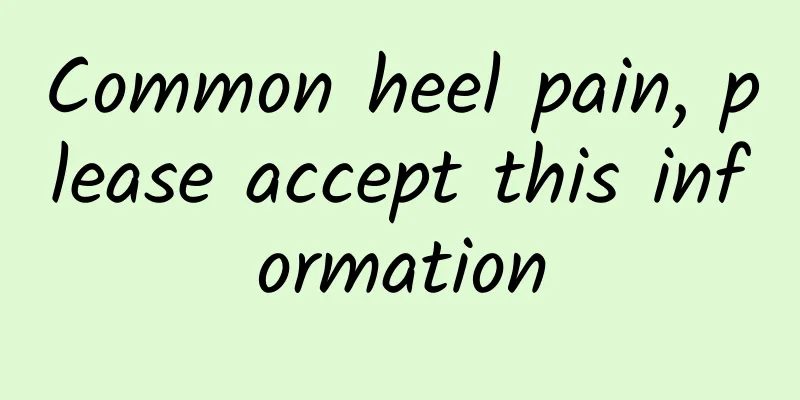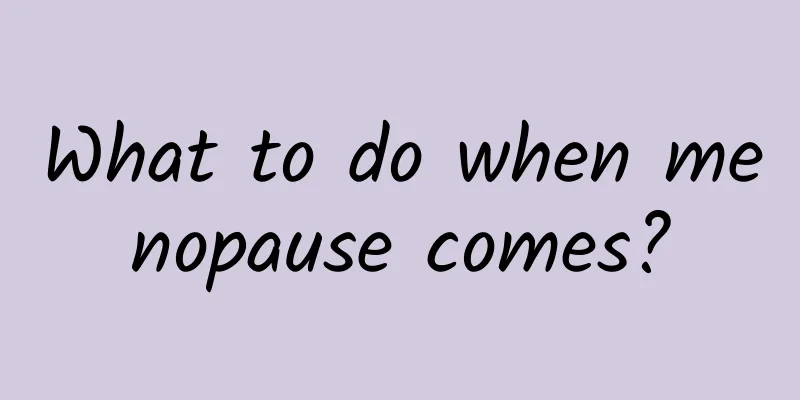Common heel pain, please accept this information

|
This is the 4380th article of Da Yi Xiao Hu Uncle Wang has been troubled recently. Every day when he gets up and walks, his heels hurt a lot. Sometimes he still hurts when he gets up after sitting for a long time. It gets better when he walks, but sometimes it still hurts when he walks too much. Uncle Wang applied the ointment at home, but it didn’t work. Uncle Wang soaks his feet in hot water before going to bed, which makes him feel much more comfortable, but the heel pain problem is still not solved, and it has been recurring for decades. Uncle Wang had no choice but to go to the community health service center to find Dr. Lu from the acupuncture department. Dr. Lu carefully studied Uncle Wang’s symptoms and found that Uncle Wang’s pain was mainly on the plantar surface of the heel bone, that is, pain in the sole of the foot. At the same time, Uncle Wang is in his early sixties, with a big belly and excessive weight. He is indeed a portrait of a patient prone to heel pain. Heel pain is a very common clinical phenomenon, the main feature of which is pain on the plantar surface of the calcaneus (pain on the bottom of the heel). It is more common in middle-aged and elderly obese men. It is usually considered to be a degenerative disease related to strain. It is currently believed to be mainly related to plantar fasciitis, calcaneal spurs, and inflammation and atrophy of the heel fat pad. We analyze the three main causes one by one ① First of all, heel fat pad inflammation or heel fat pad atrophy is more common. Due to long-term walking, running, jumping, standing and other strain factors and cold and humid stimulation, the heel fat pad may become inflamed. At the same time, many elderly patients have fat tissue degeneration and a gradual decrease in the amount of elastic fiber tissue due to aging factors, which makes the skin appear "brittle" and causes atrophy of the soft tissue in the weight-bearing area at the bottom of the heel. The main symptom of this factor is plantar pain, which worsens in the morning or after sitting for a long time, and can be relieved after walking. Fixed tender points can be found in the weight-bearing area on the bottom of the heel. ② The onset age of plantar fasciitis may be slightly younger. The plantar fascia is a fibrous structure that maintains the longitudinal arch of the foot. The calcaneal tuberosity is the plantar fascia's insertion point. Fatigue factors such as long-term running, jumping, long-distance walking, and long-term standing cause continuous muscle and fascia traction, which can easily cause inflammation and even calcification of the plantar fascia's insertion point. The symptoms of plantar fasciitis may extend beyond the plantar surface of the calcaneus and develop toward the midfoot. Patients with this factor may not feel so painful when they first walk, but then feel more and more pain as they walk. The tenderness point is sometimes not so fixed, and it may be a range at the calcaneal tuberosity or even develop toward the midfoot. ③ Calcaneus spur. Calcaneus spur can be said to be a "metaphysics". Many times people simply attribute heel pain to calcaneal spur, but it is obvious that many people with calcaneal spurs do not feel pain, and those who feel pain do not necessarily have calcaneal spurs. Although lateral calcaneal radiographs can find that many people have hyperplasia of calcaneal tuberosities, not so many people really have symptoms, and there is no positive correlation between the size of calcaneal spurs and the occurrence and degree of pain. Therefore, it is difficult to attribute all the pain on the bottom of the heel to calcaneal spurs. However, some calcaneal spurs will cause bursal inflammation due to long-term wear, and even the subcalcaneal bursa will become more seriously inflamed due to various factors, which will also cause pain. Treatment and self-regulation of heel pain We have talked about so many causes of disease, mainly to answer the question of "why does it hurt?" So what should we do if it really hurts? First, topical anti-inflammatory and analgesic drugs, such as various gels, ointments, creams, etc. containing non-steroidal drugs, can be used orally for analgesic drugs if the effect is not good, after excluding contraindications, physical therapy and heat therapy can also be carried out. Secondly, if the effect is not good and the pain persists for a long time, patients can consider local drug injection, that is, local blockade. Local blockade usually uses medium- and long-acting glucocorticoids. "Blockade" sounds terrible and has many "side effects", but many times, patients with heel pain have not seen improvement after taking medicine, ointments, and ointments for a long time, but they have been cured for several years after a shot. This should be decided by professional physicians through comprehensive judgment of the patient's benefits. Finally, there are indeed some patients who have not been effective after long-term and repeated conservative treatment, especially those with heel spurs and subcalcaneal bursitis. We can consider surgical treatment, such as arthroscopic subcalcaneal bursal cleaning and bone spur cleaning. At the same time, patients with heel pain should avoid wearing shoes with hard soles. It is a good choice to choose shoes with moderate hardness, good feedback, and good shock absorption. You can try to use hot water to soak your feet, rub and massage the soles of your feet to improve local inflammation and relieve local symptoms. If patients with heel pain are obese or overweight, they should also consider losing weight to prevent recurrence of the disease by controlling their weight. Traditional Chinese medicine is also widely used in the treatment of heel pain. Acupuncture, massage, external application of Chinese medicine, and soaking in Chinese medicine can all achieve varying degrees of therapeutic effects on heel pain. Uncle Wang gradually got better with the combined methods of Chinese medicine foot bathing, Chinese medicine external application, and acupuncture and physical therapy from Dr. Lu. Dr. Lu also helped Uncle Wang control his weight through the method of thread embedding weight loss combined with dietary adjustments, further alleviating the burden on Uncle Wang's body and thus preventing the recurrence of Uncle Wang's heel pain to a certain extent. Author: Quyang Road Community Health Service Center, Hongkou District, Shanghai Acupuncture and Traumatology Lu Wenting Yueyang Hospital of Integrated Traditional Chinese and Western Medicine Affiliated to Shanghai University of Traditional Chinese Medicine Feng Shengyi, Department of Joint Surgery, Orthopedic Center Some pictures are taken from the Internet. If there is any infringement, please let us know and they will be deleted. All names and place names are pseudonyms and any similarity is purely coincidental. |
>>: Children curl up with abdominal pain, beware of acute mesenteric lymphadenitis
Recommend
Can I eat sweet potato leaves during confinement?
You can eat sweet potato leaves during the confin...
Is a girl's breast swelling pregnant?
We understand that once a woman becomes pregnant,...
What should I do if my private parts are swollen and inflamed?
In the summer, people often suffer from getting a...
What Chinese medicine can women take to replenish blood?
If women have a bad complexion, the most importan...
Is it normal to have bleeding after medical abortion without seeing the fetal sac?
If bleeding continues after medical abortion and ...
Eating sweets does more than just hurt children’s teeth!
The six deadly sins of sweets During the Chinese ...
Is it normal for a bear's paw to not have red paws? How can a bear's paw have red paws?
With the improvement of living standards, many pe...
Introduction to the causes of urinary incontinence in women
Introduce to you the causes of urinary incontinen...
Where is the Red River in Honghe Prefecture, Yunnan? What is there to do in Honghe, Yunnan?
Lijiang Old Town is a rare well-preserved ancient...
What is the reason for women's palms to turn yellow?
For mature women, they experience menstrual perio...
What diseases can delay menstruation?
There are many reasons for delayed menstruation, ...
[North Xinjiang science experts say: Not that safe] Revealing the correct way to supplement calcium
In this era where calcium is the most important t...
How do women take care of their health during menstruation?
Women lose a lot of blood during menstruation, so...
How long does it take for the first menstrual period after medical abortion?
Medical abortion will more or less cause some min...
What causes girls to grow beards?
Girls must pay attention to understanding the rea...









